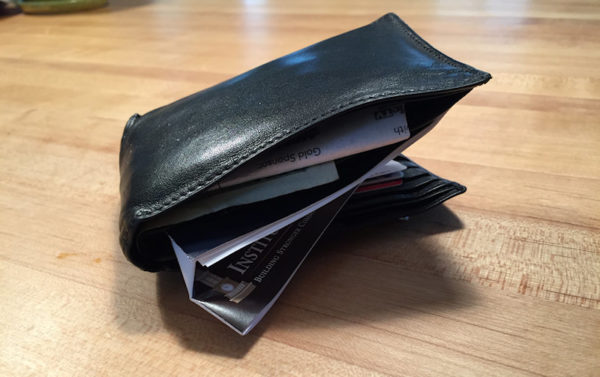In the classic Seinfeld episode, George’s wallet is so comically overstuffed with junk that it made him sit at a tilt when it was in his back pocket. In an effort to balance it out, he would stuff the other pocket with napkins.
This humorous skit became famous because it exaggerated a situation experienced by many—left untended, our wallets can become cluttered with bric-a-brac. Often, this collected junk crowds out and obscures the useful pieces.
A lot of wallets feature a huge collection of seldom used plastic cards, many of which were used once and never again. The CodeBroker Mobile Loyalty Survey of 1,207 U.S. consumers across all age groups and income levels bears out this uncomfortable conclusion, especially when it comes to customer loyalty cards.
Our poll found 43% of those surveyed said that loyalty cards themselves were the biggest hassle with these programs. The survey also found that a majority (60%) of respondents felt that carrying cards and retrieving them at POS was by far the biggest hassle of existing programs.
The survey likewise revealed a huge disconnect between loyalty programs and consumer usage. Of those surveyed, 65% of shoppers attempting to redeem a reward at POS found it had expired, and 43% say rewards expire before they can be redeemed. Another 38% claim no knowledge of a reward’s existence. Clearly, these plastic cards are a poor facilitator of loyalty.
What could be the solution to this state of affairs? Consider two other findings in the survey:
- 70% of shoppers say they would use a mobile version of their loyalty cards if they didn’t have to sign into a website or download an app.
- 71% say they would be more likely to use their loyalty cards if they could access these cards and rewards from their mobile phone.
This makes a certain amount of sense—carrying a mobile phone has become as ubiquitous an activity as carrying a wallet and keys. In many consumers’ lives, their phone acts as the hub for handling their daily transactions, and that includes the ability to exploit rewards, digital coupons, discounts and other shopping incentives.
Based on these findings, we recommend the following steps to improve customer loyalty:
- Incorporate mobile loyalty programs into your overall customer loyalty program.
- Phase out the use of plastic cards and begin using a digital card. This digital card should allow members to access rewards, balances, and directions on how to earn points in real-time using their mobile phones and other internet-connected devices without logging in.
- Give customers access to loyalty programs via all the popular mobile technologies including text messaging, mobile apps, email, digital wallet, and Facebook.
- Allow customers to easily engage with a loyalty program across all retail channels including desktop, mobile, in-store, and online.
Transitioning from plastic cards to a digital mobile solution is a win-win for both customers and merchants. Consumers enjoy greater convenience and a reduction in the amount of “friction” present in transactions. On the merchant side, switching to digital facilitates more transactions, increases the effectiveness of marketing outreach, and drives greater revenue.
In this new model, George Costanza’s overstuffed wallet would not even be possible. All the things he needed to effectively participate in a loyalty program would be managed and contained on his mobile device.
